 Stormwater runoff is a concern year-round, but even more so in the spring when snow is melting and rain is abundant, particularly in humid continental climates. Stormwater starts as precipitation such as snow, sleet, and rain, which lands on natural ground cover such as forests, grass, or gardens. In a natural environment, stormwater soaks into the ground and is filtered by layers of dirt and rock, then finds its way to our groundwater and drinking water supply. Due to urbanization, stormwater in developed areas does not land on natural ground cover but instead washes off roads, driveways, parking lots, rooftops, and other impervious surfaces, becoming stormwater runoff. Stormwater runoff picks up road salt, chemicals, oil, bacteria, sewage, sediment, and garbage, then washes these pollutants into ditches and storm drains, contaminating our streams, rivers, ponds, and lakes. To make matters worse, climate change exacerbates stormwater runoff and contributes greatly to the impairment of surface water supplies.
Stormwater runoff is a concern year-round, but even more so in the spring when snow is melting and rain is abundant, particularly in humid continental climates. Stormwater starts as precipitation such as snow, sleet, and rain, which lands on natural ground cover such as forests, grass, or gardens. In a natural environment, stormwater soaks into the ground and is filtered by layers of dirt and rock, then finds its way to our groundwater and drinking water supply. Due to urbanization, stormwater in developed areas does not land on natural ground cover but instead washes off roads, driveways, parking lots, rooftops, and other impervious surfaces, becoming stormwater runoff. Stormwater runoff picks up road salt, chemicals, oil, bacteria, sewage, sediment, and garbage, then washes these pollutants into ditches and storm drains, contaminating our streams, rivers, ponds, and lakes. To make matters worse, climate change exacerbates stormwater runoff and contributes greatly to the impairment of surface water supplies.
How Climate Change Exacerbates Stormwater Runoff

A study by scientists from the National Center for Atmospheric Research in Boulder, Colorado published in December 2016 indicates that climate change will likely bring more intense, frequent, damaging storms to all areas of the country, particularly to the Northeast and the Gulf Coast. In fact, studies show that storms in these areas could become up to five times as frequent and bring 70% more rain if greenhouse gas emissions are not reduced. Storms of this magnitude will likely cause flash floods, landslides, and an overabundance of stormwater runoff – far more than current municipal stormwater systems are designed to handle.

The study also indicated that regions such as the Pacific Northwest and central United States will likely become drier, but with more intense, extreme rainfall. We have already seen this in northern California, where the Oroville Dam suffered serious damage after drenching rains in February. Prior to these rains, the state had been plagued by severe drought. Rising temperatures increase atmospheric humidity, causing extreme precipitation and an increased risk of flash flooding. And while it may seem counterintuitive, drought only intensifies the problem. Drought leads to less vegetation and more firmly packed soil, both of which inhibit infiltration. When heavy rains follow drought, soil tends to erode, washing remaining plants away as well. Regular, gentle rain is the key to restoring soil, and without it, soil degradation will only intensify.
Managing Increased Stormwater Runoff
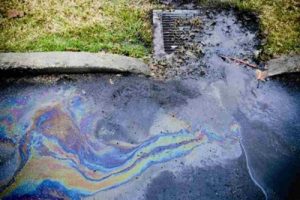 Unfortunately, the above-mentioned factors will likely lead to an increase in stormwater runoff and its accompanying problems. Municipal stormwater systems, already faced with increased nutrient regulations, will likely become overwhelmed, resulting in backups, localized flooding, and increased runoff of contaminants such as bacteria and nutrients into waterways. Also, combined stormwater and wastewater systems overwhelmed by extreme precipitation will release more combined sewer overflows (CSOs) into our rivers, lakes, and streams, degrading water quality and affecting aquatic life. At the same time, drought exacerbates the problem by lowering water levels, leading to more concentrated levels of pollutants in our waterways. These combined factors cause water quality deterioration and create major problems for water treatment plants. Already facing dwindling budgets, municipalities will have difficulty meeting water quality standards if stormwater runoff continues to increase unabated.
Unfortunately, the above-mentioned factors will likely lead to an increase in stormwater runoff and its accompanying problems. Municipal stormwater systems, already faced with increased nutrient regulations, will likely become overwhelmed, resulting in backups, localized flooding, and increased runoff of contaminants such as bacteria and nutrients into waterways. Also, combined stormwater and wastewater systems overwhelmed by extreme precipitation will release more combined sewer overflows (CSOs) into our rivers, lakes, and streams, degrading water quality and affecting aquatic life. At the same time, drought exacerbates the problem by lowering water levels, leading to more concentrated levels of pollutants in our waterways. These combined factors cause water quality deterioration and create major problems for water treatment plants. Already facing dwindling budgets, municipalities will have difficulty meeting water quality standards if stormwater runoff continues to increase unabated.
Fortunately, successfully managing stormwater runoff is a realistic goal with proper planning and incorporation of best management practices (BMPs). Systems that proactively develop strategies to address stormwater runoff will find themselves far better prepared to manage both increased stormwater and more stringent regulations. Stormwater management strategies include the following:
-
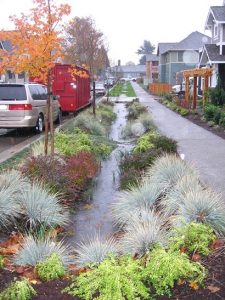
Rain gardens are a beautiful and sustainable way to manage stormwater. Increase the use of Low Impact Development. Low Impact Development (LID), also known as green infrastructure, is a stormwater management approach that maintains natural hydrology during site development. LID minimizes impervious surfaces and utilizes existing natural site features along with conservational controls to manage stormwater. Examples of LID design include bioretention basins, grassed swales, and rain gardens.
- Minimize impervious surfaces. Impervious surfaces such as roads, parking lots, and rooftops prevent infiltration. Install pervious pavements on driveways and walkways, stormwater bumpouts on streets, and tree boxes on sidewalks. Also, disconnect impervious surfaces by installing grass or gravel buffer zones. Lastly, plant green roofs and roof gardens to greatly reduce stormwater runoff while enhancing the environment.
- Protect and create wetlands. Wetlands are of great value due to their ability to retain water and recharge groundwater. Constructed wetlands provide the same benefit as natural wetlands and help to mitigate water pollution.
-

White clover is native to New England, drought resistant, and soft under the feet. Landscape with native flora. Native trees and plants provide habitat for and attract birds, butterflies, and other beneficial local wildlife, and are acclimated to local rainfall amounts and climate. Unlike turf grass, native plants require very little maintenance because they are naturally resistant to local pests and disease. Because they do not need fertilizers, pesticides, or supplemental watering, they are easy and inexpensive to maintain and are environmentally friendly.
- Plant trees. Trees help to manage stormwater by reducing erosion and runoff along streams and waterways. They also help to cool urban areas and improve the air quality.
- Separate combined sewer overflows. By separating the collection of sewage and stormwater, overflow of sewer systems and treatment plants during rainy periods prevents the mixing of the surface runoff, which is lightly polluted, with municipal wastewater, which is highly polluted.
In Conclusion
Climate change and stormwater runoff together create the perfect storm for water quality degradation. We are already seeing the effects of climate change on our nation’s infrastructure, and unless we address these complications now, we will likely find ourselves increasingly burdened by boil water orders and expensive water treatment projects. Fortunately, by proactively making some simple and largely inexpensive environmental improvements, we can protect our nation’s water bodies for future generations.



 A good method to check for leaks is to examine your winter water usage. It’s likely that a family of four has a serious leak problem if its winter water use exceeds 12,000 gallons per month.
A good method to check for leaks is to examine your winter water usage. It’s likely that a family of four has a serious leak problem if its winter water use exceeds 12,000 gallons per month. A leaky faucet that drips at the rate of one drip per second can waste more than 3,000 gallons per year. That’s the amount of water needed to take more than 180 showers!
A leaky faucet that drips at the rate of one drip per second can waste more than 3,000 gallons per year. That’s the amount of water needed to take more than 180 showers! An irrigation system should be checked each spring before use to make sure it was not damaged by frost or freezing.
An irrigation system should be checked each spring before use to make sure it was not damaged by frost or freezing.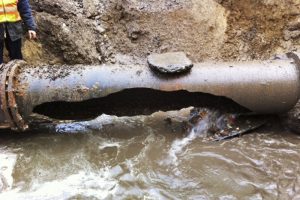
 Feel free to share the above infographic (with attribution),
Feel free to share the above infographic (with attribution), 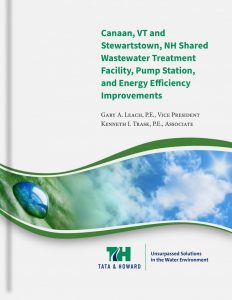


 Modern-day, developed nations use an exorbitant amount of chemicals for a variety of reasons. Some of these chemicals are used to prevent and treat illness, to reduce pain from injury or surgery, to treat mental health issues, and for hygiene, grooming, and cosmetic reasons. Commonly referred to as Pharmaceutical and Personal Care Products, or PPCPs, these products include prescription and over-the-counter medications, cosmetics, fragrances, face and body washes, sunscreens, insect repellants, and lotions.
Modern-day, developed nations use an exorbitant amount of chemicals for a variety of reasons. Some of these chemicals are used to prevent and treat illness, to reduce pain from injury or surgery, to treat mental health issues, and for hygiene, grooming, and cosmetic reasons. Commonly referred to as Pharmaceutical and Personal Care Products, or PPCPs, these products include prescription and over-the-counter medications, cosmetics, fragrances, face and body washes, sunscreens, insect repellants, and lotions. PPCPs and EDCs enter our waterways through sewage, leachate from landfills and septic systems, flushing of unused medications, and agricultural runoff, and they have the potential to cause a myriad of problems. While there has not yet been a truly significant amount of research completed on all of these products and chemicals, some facts are known. For example, excessive antibiotic use has led to the development of “superbugs,” or bacteria such as MRSA that are resistant to most antibiotics.
PPCPs and EDCs enter our waterways through sewage, leachate from landfills and septic systems, flushing of unused medications, and agricultural runoff, and they have the potential to cause a myriad of problems. While there has not yet been a truly significant amount of research completed on all of these products and chemicals, some facts are known. For example, excessive antibiotic use has led to the development of “superbugs,” or bacteria such as MRSA that are resistant to most antibiotics.  Some of the most common EDCs in drinking water include estrogen and progesterone from birth control pills, as well as anabolic steroids. These compounds interfere with the reproductive capabilities of aquatic wildlife. Examples include eggshell thinning and subsequent reproductive failure of waterfowl; reduced populations of Baltic seals due to lower fertility and increased miscarriage; development of male reproductive organs in female marine animals, such as snails; feminization and subsequent decreased populations of certain types of fish, including bass; and reduced or malformed frog populations.
Some of the most common EDCs in drinking water include estrogen and progesterone from birth control pills, as well as anabolic steroids. These compounds interfere with the reproductive capabilities of aquatic wildlife. Examples include eggshell thinning and subsequent reproductive failure of waterfowl; reduced populations of Baltic seals due to lower fertility and increased miscarriage; development of male reproductive organs in female marine animals, such as snails; feminization and subsequent decreased populations of certain types of fish, including bass; and reduced or malformed frog populations.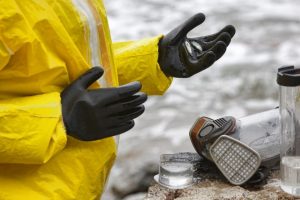 Currently, most PPCPs and EDCs are not regulated at either the state or federal level; however, they are being investigated by the Environmental Protection Agency (EPA) as Contaminants of Emerging Concern. Because PPCPs and EDCs appear to hinder reproduction in marine life, many state environmental organizations strongly support additional research and potential regulation on these compounds. In 2006, Massachusetts became the first state in the nation to set drinking water and cleanup standards for the known EDC perchlorate after it had been detected in the state’s drinking water, and many states have implemented public education campaigns on these compounds, their effects, and their proper disposal.
Currently, most PPCPs and EDCs are not regulated at either the state or federal level; however, they are being investigated by the Environmental Protection Agency (EPA) as Contaminants of Emerging Concern. Because PPCPs and EDCs appear to hinder reproduction in marine life, many state environmental organizations strongly support additional research and potential regulation on these compounds. In 2006, Massachusetts became the first state in the nation to set drinking water and cleanup standards for the known EDC perchlorate after it had been detected in the state’s drinking water, and many states have implemented public education campaigns on these compounds, their effects, and their proper disposal. On an individual level, taking small, simple steps can have a large impact on the amount of PPCPs and EDCs in our water supply:
On an individual level, taking small, simple steps can have a large impact on the amount of PPCPs and EDCs in our water supply:
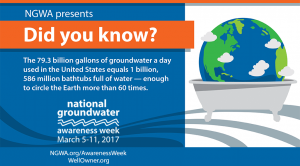 Life as we know it would be impossible without groundwater, or the water that fills cracks, voids, and other openings in soil, sand, and bedrock. About 99% of the available freshwater on Earth is groundwater. Because of this, it is the world’s most extracted natural resource, at the rate of about 259 trillion gallons per year, with about 60% of that withdrawal going towards agriculture. Groundwater also supports our world’s ecosystems. People with wells use groundwater for drinking water, and most groundwater flows directly into streams, rivers, and lakes from beneath.
Life as we know it would be impossible without groundwater, or the water that fills cracks, voids, and other openings in soil, sand, and bedrock. About 99% of the available freshwater on Earth is groundwater. Because of this, it is the world’s most extracted natural resource, at the rate of about 259 trillion gallons per year, with about 60% of that withdrawal going towards agriculture. Groundwater also supports our world’s ecosystems. People with wells use groundwater for drinking water, and most groundwater flows directly into streams, rivers, and lakes from beneath. If you own a private water well, have your water tested annually or if there is a change in the odor, taste, or smell.
If you own a private water well, have your water tested annually or if there is a change in the odor, taste, or smell. Groundwater is essential to human life and a healthy environment. Not only is it imperative that we protect groundwater from contamination by chemicals and waste, but it is also important to remember to conserve water wherever we can. Groundwater sources are being withdrawn at a faster rate than they are being replenished, and we cannot continue to utilize our world’s most precious resource with such abandon. Help NGWA spread the word during National Groundwater Awareness Week to ensure we all remember to do our part.
Groundwater is essential to human life and a healthy environment. Not only is it imperative that we protect groundwater from contamination by chemicals and waste, but it is also important to remember to conserve water wherever we can. Groundwater sources are being withdrawn at a faster rate than they are being replenished, and we cannot continue to utilize our world’s most precious resource with such abandon. Help NGWA spread the word during National Groundwater Awareness Week to ensure we all remember to do our part.